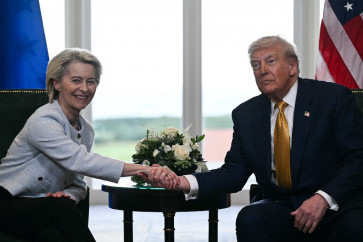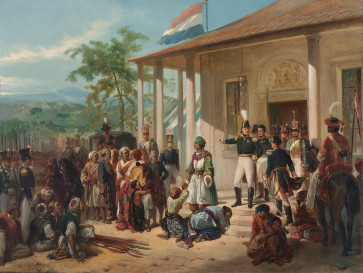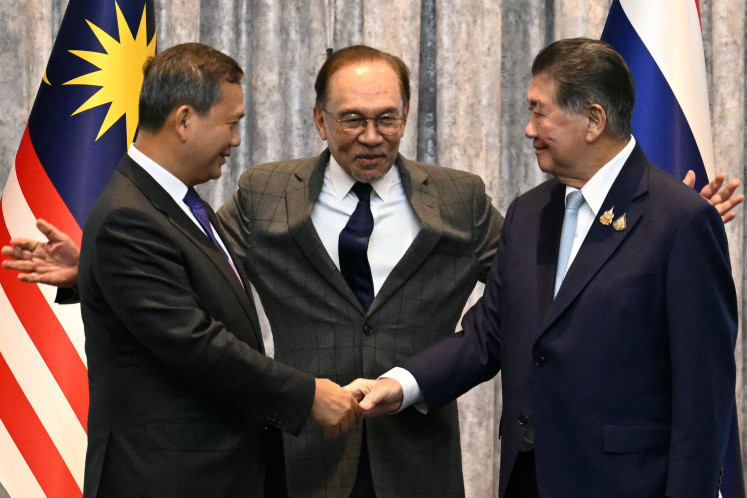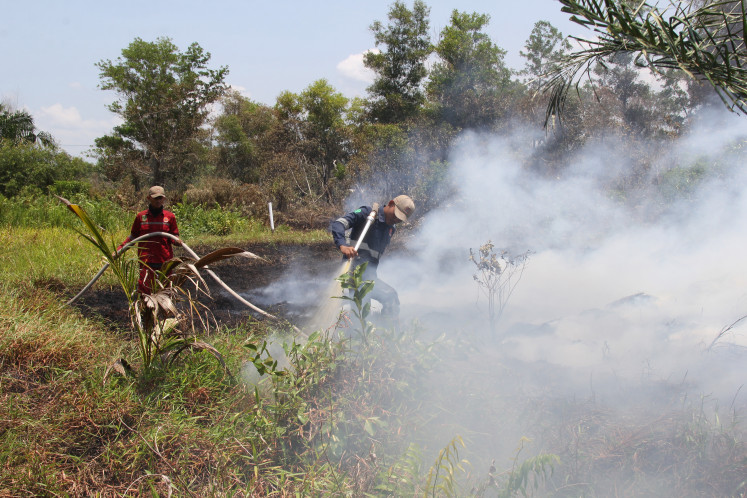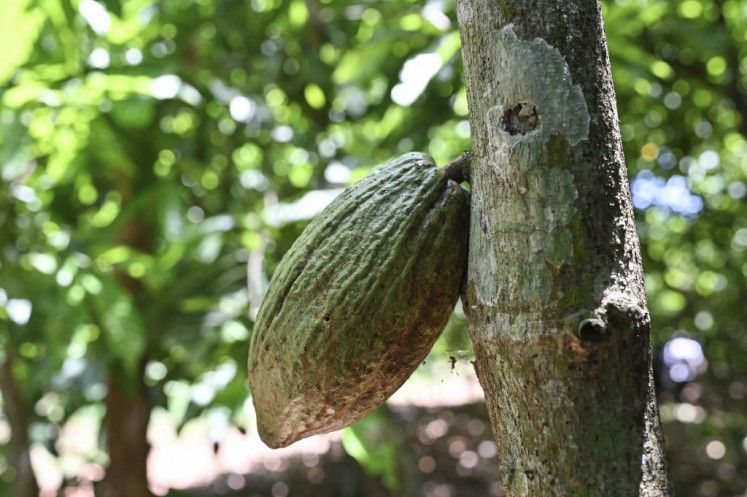Popular Reads
Top Results
Can't find what you're looking for?
View all search resultsPopular Reads
Top Results
Can't find what you're looking for?
View all search resultsIs it worth connecting Sumatra and Java?
In recent months there have been public and media debates on the possibility of connecting Sumatra and Java islands using either a long-span bridge or an undersea tunnel
Change text size
Gift Premium Articles
to Anyone
I
n recent months there have been public and media debates on the possibility of connecting Sumatra and Java islands using either a long-span bridge or an undersea tunnel. The issue has become more appealing because of the involvement of an Indonesian business tycoon acting as a possible investor on the project; a prominent and respected national engineering consulting company; and the provinces of Banten and Lampung.
Both provincial governments have signed an agreement to pursue the proposed connecting bridge, spanning 29 km, making it one of the longest suspension bridges in the world. The bridge will cost US$10 billion and require 15 years to construct using public-private partnership scheme.
But the biggest question has remained unanswered: What will it cost the government to build such a megastructure?
Drawn from the 2001 national origin destination survey data from the Transportation Ministry, around 100 - 125 million people are estimated to travel between Sumatra and Java, and potentially 20 - 30 percent cross the Sunda Strait each year in each direction, creating a serious threat to the efficiency of the national transport system.
The effort to increase the capacity of the existing system between the two islands has been hampered by the fact that the current ports and ferry crossings cannot provide adequate services.
So far, the bottle neck in the Merak-Bakaheuni ferry crossing has not been addressed properly, creating frustration among travelers and the trucking industry.
While debates on technical issues are mostly surround the possibility of connecting the islands by bridge or tunnel, the proponents of a more conservative and prudent system are in favor of modernizing the ferry services by increasing the capacity and improving the quality of existing ferry crossings.
The latter argues that the costs of improving the ferry services would be far less than constructing a bridge or tunnel, and mobility between both islands could be improved greatly and the sea transport industry could be revived. As a maritime country, the policy should, as far as possible, promote the use of existing ferry services, which will send a strong message for an affirmative policy on sea transport services.
However, with the current and future ferry crossing technology, in 20 years time the need to cater for double the amount of today's passengers and goods annually and in a much higher speed than we currently enjoy is the main challenge for the ferry crossings.
Can it meet such demand? The use of a bridge and a promise to reduce the travel time to 30 minutes between the two islands is obviously an appealing proposal despite the disaster and security risks that need to be assessed and addressed.
The presence of an active Mt. Krakatau has positions the bridge in a prevailing and constant danger of earthquake and tsunami.
In the opposite side of the coin, however, a huge travel time reduction means that the cost of Indonesian commodities and services could stay competitive in the global market.
Who are the losers and gainers?
Looking at the current economic structure of Banten and Lampung as the proponents of the Sumatra-Java Bridge, both provinces are actually confronted by serious threats not opportunities.
The biggest threat comes from the fact that there is a little economic interdependency between the two provinces and thus connecting the two provinces will have a low impact on strengthening their economic condition.
The number of travellers and flow of commodities between them are so small, which will mean that they both rely on their economic development with Jakarta or West Java.
The reality is that it will be Jakarta, South Sumatra and also West Java that enjoy the largest benefits from the Sumatra-Java link, more than Banten and Lampung, although not without significant economic and business risks.
The danger of losing a robust local economic development in Lampung for instance, will also be a significant issue that needs to be dealt with. With easy access and investment-hungry capital from Jakarta, South Sumatra and West Java, local farmers and producers in Lampung might be out of sight, leaving local governments to deal with rural-to-urban migration and the problem of urban poverty.
Connecting Sumatra and Java is a top priority in the development agenda of the Indonesian government. The message is very clear.
This project should be developed by the central government, not only because it involves a huge government financial and political support, and a meticulous process in drafting the concession agreement, but the public perspectives of such a project are too important to be left in the hands of the private sector and two provincial governments.
The public costs will certainly be far beyond the construction costs and if we take a wrong approach, we put our future economy at risk.
The project should be seen as a means to consolidating and strengthening the economic base between southern Sumatra and western Java which will hopefully created a competitive economy in the regional or global market.
In order to have a strong legal basis for the project, the need to incorporate the project plan in the Indonesian mid-term national plan is urgent and inevitable. However, the policy process and formulation should be prudent and inclusive, involving various parties and stakeholders.
Prof. Dr. Danang Parikesit is a professor of transportation at Gadjah Mada University, and is the secretary-general of the Indonesia Transportation Society.


